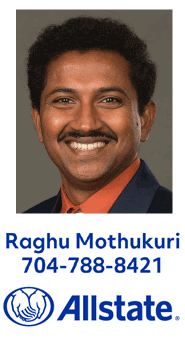|
|
|
|
|
|
Mumbai, formerly Bombay, is the capital of the Indian state of Maharashtra and the financial capital of India. With an estimated population of thirteen million, it is the second most populous city in the world. Along with the neighbouring suburbs of Navi Mumbai and Thane, it forms, at nineteen million, the world's fifth most populous metropolitan area. Mumbai lies on the west coast of India and has a deep natural harbour. Mumbai's port handles over half of India's maritime cargo.
The name "Mumbai" is an eponym, etymologically derived from Mumba or Maha-Amba – the name of the Hindu goddess Mumbadevi – and Aai, "mother" in Marathi. The former name Bombay had its origins in the 16th century when the Portuguese arrived in the area and called it by various names, which finally took the written form Bombaim, still common in current Portuguese use. After the British gained possession in the 17th century, it was anglicised to Bombay, although it was known as Mumbai or Mambai to Marathi and Gujarati-speakers, and as Bambai in Hindi, Urdu. The name was officially changed to its Marathi pronunciation of Mumbai in 1995.
Artifacts found near Kandivali in northern Mumbai indicate that these (now connected) seven islands had been inhabited since the Stone Age. Documented evidence of human habitation dates back to 250 BCE, when it was known as Heptanesia (Ptolemy). In the 3rd century BCE, the islands formed part of the Maurya Empire, ruled by the Buddhist emperor, Asoka. The Hindu rulers of the Silhara Dynasty later governed the islands until 1343, when the kingdom of Gujarat annexed them. Some of the oldest edifices of the archipelago – the Elephanta Caves and the Walkeshwar temple complex date from this era. In 1534, the Portuguese appropriated the islands from Bahadur Shah of Gujarat. They were ceded to Charles II of England in 1661, as dowry[15] for Catherine de Braganza. These islands, were in turn leased to the British East India Company in 1668 for a sum of £10 per annum. In 1853, India's first passenger railway line was established, connecting Mumbai to the town of Thane. The opening of the Suez Canal in 1869 transformed Bombay into one of the largest seaports on the Arabian Sea.
Mumbai is the commercial and entertainment center of India, generating 5% of India's GDP and accounting for 25% of industrial output, 40% of maritime trade, and 70% of capital transactions to India's economy. Mumbai is one of the world's top ten centres of commerce by global financial flow, home to such important financial institutions as the Reserve Bank of India, the Bombay Stock Exchange, the National Stock Exchange of India and the corporate headquarters of many Indian companies and numerous multinational corporations. The city also houses India's Hindi film and television industry, known as Bollywood. Mumbai's business opportunities, as well as its high standard of living, attract migrants from all over India and, in turn, make the city a potpourri of many communities and cultures. It is also an important base for the Indian Navy, being the headquarters of the Western Naval Command.
Mumbai lies at the mouth of Ulhas River off the western coast of India, in the coastal region known as the Konkan. It sits on Salsette Island, partially shared with the district of Thane. Much of the city lies just above sea level, with average elevations ranging from 10 m (33 ft) to 15 m (49 ft). Sanjay Gandhi National Park is located near to the city, and covers almost 1/6th of the city area. It is to be noted big cats such as panthers are still residing in this national park next to millions of people in an age of habitat shrinkage and species extinction. Apart from the Bhatsa Dam, six major lakes supply water to the city: Vihar, Vaitarna, Upper Vaitarna, Tulsi, Tansa and Powai. Soil cover in the city region is predominantly sandy due to its proximity to the sea. In the suburbs, the soil cover is largely alluvial and loamy. Lying in a tropical zone and the near the Arabian Sea, Mumbai's climate falls into two main seasons: the humid and the dry season with annual temperatures range from a high of 38 °C (100 °F) to a low of 11 °C (52 °F).
Most of Mumbai's inhabitants rely on public transport to travel to and from their workplace. Transport systems in Mumbai include the Mumbai Suburban Railway, BEST buses, taxis, auto rickshaws, ferries, and airplanes. The city is the headquarters of two railway zones: the Central Railway (CR) headquartered at Chhatrapati Shivaji Terminus, and the Western Railway (WR) headquartered near Churchgate. Mumbai's Chhatrapati Shivaji International Airport (formerly Sahar International Airport) is the busiest airport in South Asia. The Juhu aerodrome was India's first airport, and now hosts a flying club and a heliport.
Cricket is the most popular sport in the city. Other sports are mostly played in the numerous clubs and gymkhanas, and include tennis, squash, billiards, badminton, table tennis and golf. Every February, Mumbai holds the Derby races in the Mahalaxmi Racecourse.
Websites:
http://www.mumbainet.com/
http://www.lonelyplanet.com/worldguide/india/mumbai/
http://wikitravel.org/en/Mumbai
http://www.indianrail.gov.in
|
|
|




|
|
|
|
|